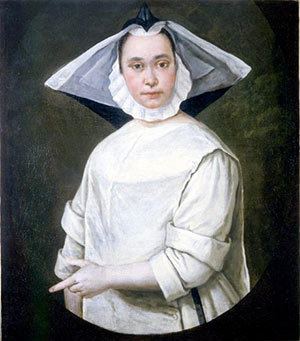 |
| Self-Portrait, Marietta Robusti |
By the time she was 14 Marietta had captured the attention of Holy Roman Emperor Maximillian II and King Philip II of Spain. Both rulers tried to entice Marietta to come to their courts. Her father talked her out of these offers, some say because he was so fond of her, others because he relied heavily on her help in the workshop. Either way, Marietta stayed in Venice and Tintoretto arranged for her to marry a jeweler, Mario Augusti. In the marriage contract Augusti agreed that after the wedding he and Marietta would live in the house with Tintoretto until the day Tintoretto died. Smooth dad...real smooth.
 |
| Allegory of Wisdom, Marietta Robusti |
Marietta worked alongside her father all her life. And, that is a problem for this artist. She learned her fathers style so well that she never developed a distinct style of her own. Her career lasted 15 years or so, but very few works survive that can be directly attributed to Marietta. In a time when artists didn't consistently sign their works it is easy to understand why most of her works were attributed to her father. Some have gone so far as to suggest that, upon Tintoretto's death, his agents assigned everything in the workshop to him in order to drive the value of the works higher.
Marietta's story is illustrative of the struggles of women during this period. Women were often expected to be supporting players, sustaining the work of the father, or husband, rather than establishing their own separate career. Fortunately for us, enough of Marietta's talent shown through that now, nearly 500 years later, we can enjoy her talent and celebrate her excellent work.
Selected Sources
Deye, Carola. The History of Painting Revisited - Marietta Robusti. https://thehistoryofpaintingrevisited.weebly.com/marietta-robusti.html
Fortune, Jane. The Florentine - Marietta Robusti. https://www.theflorentine.net/art-culture/2009/09/marietta-robusti/


![Image result for Casulana [Mezari], Maddalena](https://musictheoryexamplesbywomen.com/wp-content/uploads/1544/08/Maddalena-Casulana.png)
